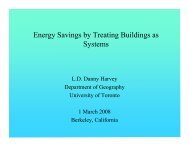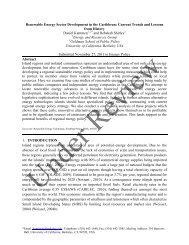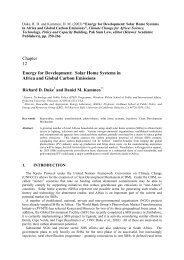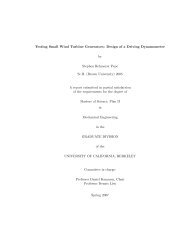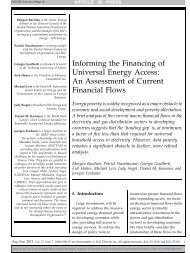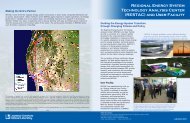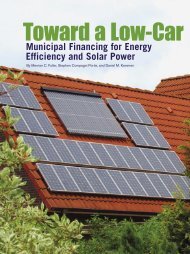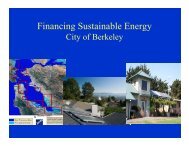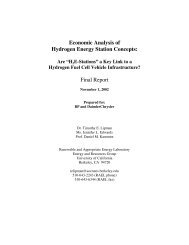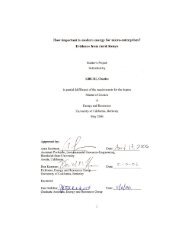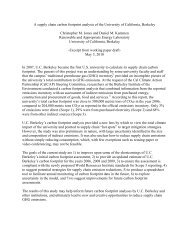What history can teach us about the future costs of U.S. nuclear ...
What history can teach us about the future costs of U.S. nuclear ...
What history can teach us about the future costs of U.S. nuclear ...
- No tags were found...
Create successful ePaper yourself
Turn your PDF publications into a flip-book with our unique Google optimized e-Paper software.
<strong>What</strong> <strong>history</strong> <strong>can</strong> <strong>teach</strong> <strong>us</strong> <strong>about</strong> <strong>the</strong> <strong>future</strong> <strong>costs</strong> <strong>of</strong> U.S. <strong>nuclear</strong> power<strong>the</strong> reactors surveyed delivered total <strong>costs</strong> above $0.08 per kWh and 5% were above$0.12/kWh. Importantly, while many estimates for <strong>the</strong> <strong>costs</strong> <strong>of</strong> new <strong>nuclear</strong> technologyanticipate a normally or log-normally distributed cost distribution, this high-cost cl<strong>us</strong>terexceeds signifi<strong>can</strong>tly <strong>the</strong> prices for new plants that traditional financial analysis wouldpredict (21). Financial risk is <strong>of</strong>ten defined as <strong>the</strong> possibility <strong>of</strong> surprise, and historical record<strong>of</strong> <strong>nuclear</strong> power clearly demonstrates this possibility.Nuclear power <strong>costs</strong> in <strong>the</strong> United States have undergone a well-chronicled trajectory <strong>of</strong>increasing capital <strong>costs</strong> and operating <strong>costs</strong>, followed by dramatic improvements inoperational efficiency and reliability (17,22-25). From <strong>the</strong> start <strong>of</strong> commercial <strong>nuclear</strong> reactorconstruction in mid-1960s through <strong>the</strong> 1980s, capital <strong>costs</strong> (dollars per kilowatt <strong>of</strong> capacity)for building <strong>nuclear</strong> reactors escalated dramatically. While unit <strong>costs</strong> for technology <strong>us</strong>uallydecrease with volume <strong>of</strong> production due to scale factors and technological learning (26-28),<strong>the</strong> case <strong>of</strong> <strong>nuclear</strong> has been seen largely as an exception that reflects idiosyncrasies <strong>of</strong> <strong>the</strong>regulatory environment as public opposition grew, regulations were tightened, andconstruction times increased (15,29,30).Beca<strong>us</strong>e <strong>of</strong> <strong>the</strong> low variable <strong>costs</strong> <strong>of</strong> <strong>nuclear</strong> power, this escalation in capital <strong>costs</strong> had alarge impact on delivered electricity <strong>costs</strong>. In fact, for <strong>the</strong> 99 reactors for which capital costdata are publicly available, this factor explains 91.6% <strong>of</strong> <strong>the</strong> observed variance in totallifetime levelized <strong>costs</strong> (p < 0.01). Never<strong>the</strong>less, operational learning, perhaps spurred byimproved economic incentives in <strong>the</strong> ind<strong>us</strong>try (25,31), has contributed to signifi<strong>can</strong>tdecreases in marginal electricity production <strong>costs</strong>. The Gen-IV process hopes to avoid costoverruns by integrating standardized reactor designs with tighter regulatory approval5



